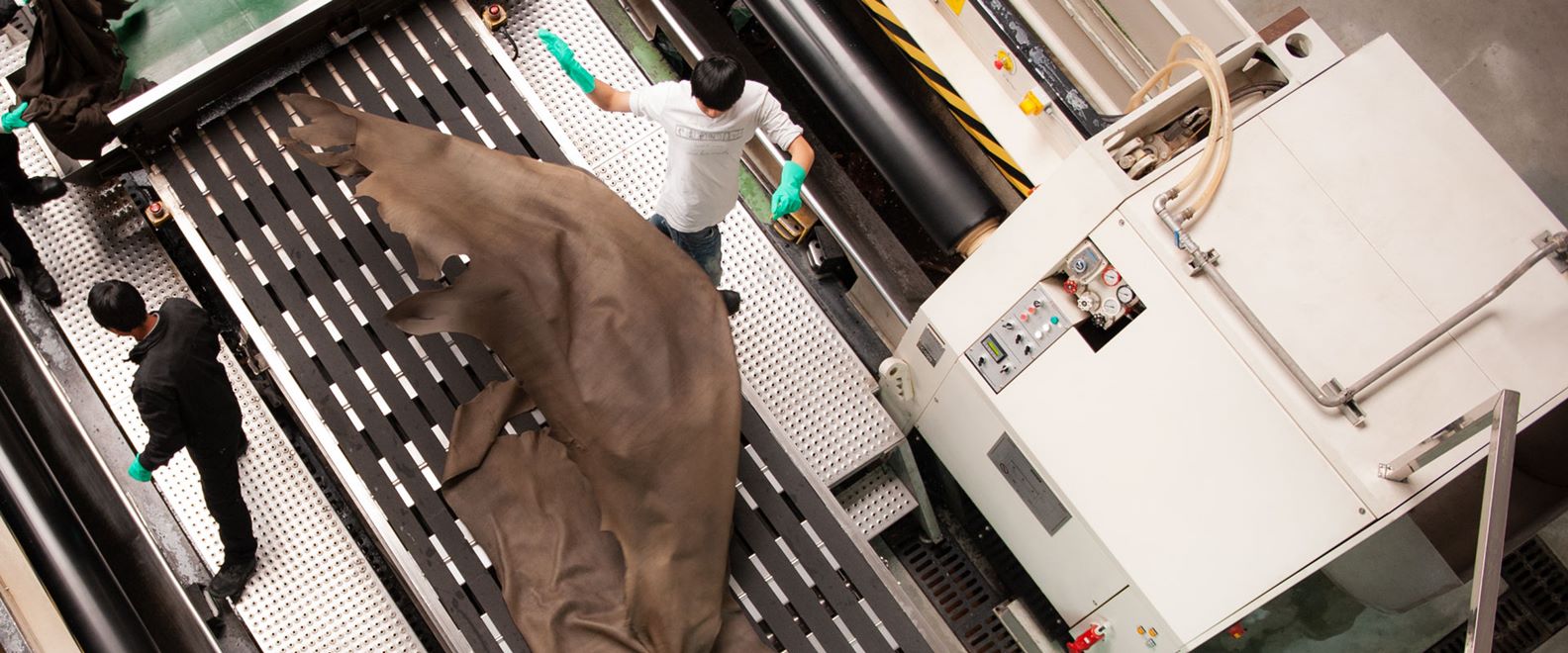![]()
image via ECCO Responsibility – ECCO Group
As a source of information for the sneaker industry, diversifying content by attempting to navigate the issues of sustainability in this industry is a difficult and frustrating process. After attending the Footwear Innovation Summit in 2019, I began documenting and learning as much as I could about manufacturing, and the solutions being initiated throughout the footwear and apparel industry. I took on myself to travel to the factory of Algix and Bloom Foam. I even did an event with the founder of Living Ink. Around that time eco-friendly solutions began to trickle into marketing language. Brands and retailers touted their initiatives to decrease waste and become carbon neutral. A variety of catchphrases were born. Consumers began to listen and adjust their buying habits, but not in a big enough way to offset the creation of over a hundred thousand sneakers a day being produced with materials with no “end of life” considered. Those sneakers, made of polyurethane and harmful bonding materials were being marketed as 10 and 20% recycled and this was called a major advancement in sustainability.
Why is this a problem? The consumer only saw recycled and thought they were buying better. Brands ramped up the distribution of sneakers and apparel made from recycled plastic bottles. Consumers didn’t understand that those recycled materials were made by using virgin materials which constantly contributes to microplastics entering the water systems.
Brands Utilizing SAC/HIGG MSI as Evidence of Sustainability Will Have to Adjust Claims
The miseducation of the consumer finally hit the wall with an announcement that the Sustainable Apparel Coalition, a trusted source utilizing the Higg Index, had been delivering misinformation allowing false-positive environmental claims for its affiliates. A trusted source was shaping retail and consumer behavior with the wrong information. I shared the post above discussing the details. In sneaker media, this type of information is overlooked. It was critical to have a record of this moment. I thought it would create change, but in the process of researching if there were any considerable changes in language and the misrepresentation of information on environmental issues in the sneaker and apparel industry, I discovered a secondary source was doing a similar form of damaging misrepresentation and the claim was being presented in an infographic:
The above Environmental Infographic from the MII site is difficult for me to read. As I’ve become invested in reporting on the steps being taken by brands and retailers, I’ve realized that deciphering fact from fiction is extremely difficult. If I’ve been following and writing about it and I still have to do considerable research to discern misinformation, it’s no wonder that the Norwegian Consumer Authority stepped in to condemn the SAC’s use of the Higg Index. If there is no advocate for the consumer in the education process, a chart like this becomes defacto law. When I saw this chart from MII and their report stated, “Piñatex, the startup assessed in the Higg Index, creates its leather alternative out of waste from pineapple harvesting, drastically reducing the impact of its raw material sourcing,” suggesting that the material created by Piñatex is better than the listed materials in their infographic, it raised a red flag immediately. Natural materials can contribute to environmental issues, but those issues can be manufactured more responsibly. Any material marketed as a natural leather alternative that still relies on petrochemicals to make it viable, whether that’s mycelium, pineapple, cactus, etc., should not be rated as better than the natural materials in the infographic because those alternative materials cannot biodegrade naturally. Each of the materials listed in the infographic are natural. MII may be relying on information more suited for vegans based on the food industry, when the footwear and apparel industry is a completely different method of make process. This is not to single out Piñatex, they are a company doing important work by collaborating with indigenous communities through agriculture, but this should not absolve MII from misleading reporting. Listing any alternative leather, that can’t biodegrade without harming the environment, is misinformation.
In 2020, I began looking at the work ECCO was doing with leather. Their Dri-Tan process was completely transparent and while leather can never be considered an alternative for vegans ECCO Sko A/S, the discussion should be nuanced when making a claim that pineapple leather containing PU is a better option. The materials listed in MII’s pictograph, like cotton, reminded me that I’ve been sharing information on a company like TS Designs: Our Shirts | TS Designs, a company in the Carolinas producing organic cotton with water-based inks. How MII can produce an infographic claiming natural materials like silk (which can biodegrade naturally) and wool are more harmful than vegan options fused with PU is misrepresentation and misinformation on par with SAC and it continues the type of actions condemned by NAC.
Misinformation allows for the funding of companies which contributes to the continued erosion of environmental protections attempting to be planted in an industry failing to truly make changes. One small sneaker site won’t shape change, but I’ll continue sharing posts like these because it’s important work. If you’ve read this far, use this link to contact MII and ask them to truly explain how natural materials are more harmful than any item made with PU? CONNECT | MII (materialinnovation.org)


